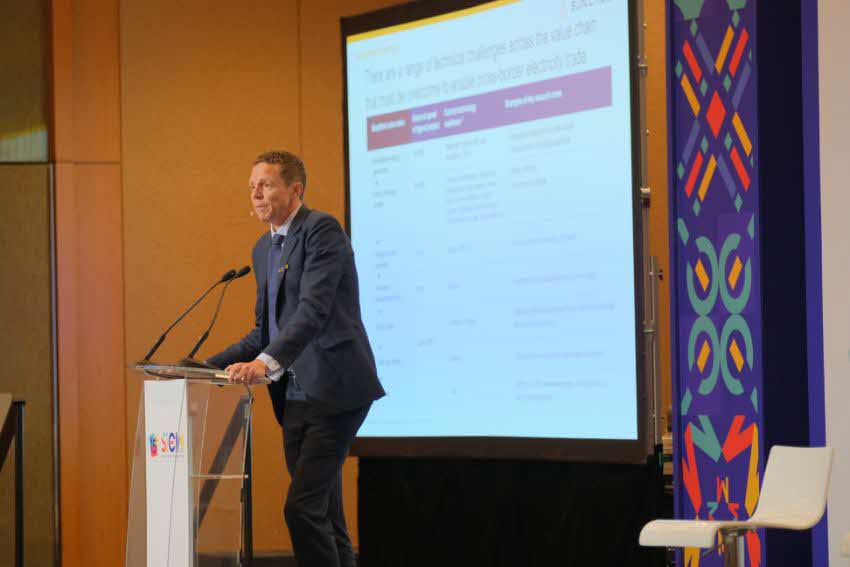Dr Fraser Thompson, Founder and Chief Strategy Officer of Sun Cable, outlined the various benefits of integrating regional power grids in his SIEW Energy Insights presentation. Aishwaryaa Kumar reports.

Dr Thompson presented how all these can be achieved due to the evolution in high-voltage direct current (HVDC) technology which currently makes it feasible to connect grids over much longer distances. Over the last two decades, HVDC system voltages have increased at 10.6% per annum, fault rates have decreased by 80%, and depths of cable laying have increased to 3,000 metres.
International efforts boosting grid connectivity
There have also been several international efforts to boost global and regional connectivity. Dr Thompson cited the following projects:
- Lake Erie: Interconnectors between the US and Canada. The EU has pledged an interconnection target of at least 15% from 10% grid connectivity by 2030;
- SIEPAC (Central American Electrical Interconnection System): Connects power grids of six Central American Nations;
- One Belt One Road: Includes connectivity of energy infrastructure, cross-border power supply networks and power-transmission routes, and regional power grid upgrades and transformation;
- Green Grids Initiative: One Sun One World One Grid: The India and UK-led programme seeks to connect 140 countries to round-the-clock green and renewable power;
- Asia Super Grid: Interconnectors spanning Northeast Asia and Southeast Asia;
- ASEAN Power Grid: Aims to create an integrated Southeast Asia power grid system.
However, Dr Thompson observed that Asia Pacific lags behind Europe in terms of cross-border connectivity. The EU has set a goal to reach 15% interconnection by 2030 from its current connection level of 12%. Asia is only 0.3% grid-connected. If Asia Pacific were to match Europe’s 2030 target for cross-border electricity trade of 15% by 2040, there would be transformative economic, social, and environmental benefits across the region.
On the range of technical challenges across the value chain that must be overcome to facilitate cross-border connectivity, Dr Thompson shared how there is key research done to address challenges such as battery stacking and automated deployment of solar arrays.
Driving innovation for a connected grid in Asia
Dr Thompson also elaborated on the Asia Green Grid Network (AGGN). AGGN aims to help drive innovation to support a connected grid in Asia. With the involvement of a range of research institutions and corporations across Asia, AGGN will collaborate with research institutions to share research and ideas on key topics associated with a green grid such as micro-grids and battery backup. AGGN will also educate industrial stakeholders by providing lectures on key areas of the green grid to promote capability building in Singapore. On the innovation front, AGGN will drive innovation through the funding of R&D projects.
Sun Cable’s research exploration for the future
Dr Thompson concluded with the areas that Sun Cable is exploring to optimise Singapore’s renewable energy backup systems for future scenarios. They include multi-energy systems simulations and advancing lithium-ion battery research in areas such as Artificial Intelligence-enhanced analytics, degradation, safety, lifespan, and novel electrode/electrolyte materials.
Follow us on Twitter (@SIEW_sg) to get the latest #SIEW2022 updates throughout the day!